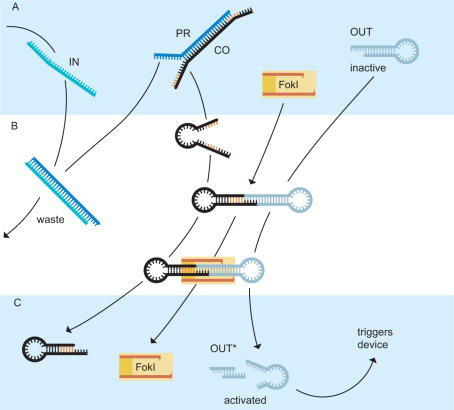Figure 1.
Operation principle of the DNA translator. (A) Initially, the output signal (OUT) is present in an inactive stem–hairpin loop conformation. Hybridization with the sequence hidden in the loop is kinetically inhibited. Also present is a ‘connector strand’ (CO) partially hybridized to a protection strand (PR) which in turn is complementary to the input signal strand. When added to the reaction, the input strand (IN) binds to the unhybridized ‘toehold’ section of the protection strand and displaces the connector through a branch migration process. (B) The connector is now able to fold into its hairpin configuration, the two halves of the FokI recognition site are united and are recognized by the enzyme. Together with the protected output signal strand, the connector forms a dumbbell shaped dimer and the FokI enzyme cuts the output strand 9 and 13 bases downstream of the recognition site, across the unligated nicks. The waste product formed by the input and protection strand is very stable and does not participate in the further reaction. (C) The stability of the remaining short stem of the output strand is too low to keep the loop closed and so the activated output signal OUT* can bind to other DNA-based devices to start or inhibit a reaction.

